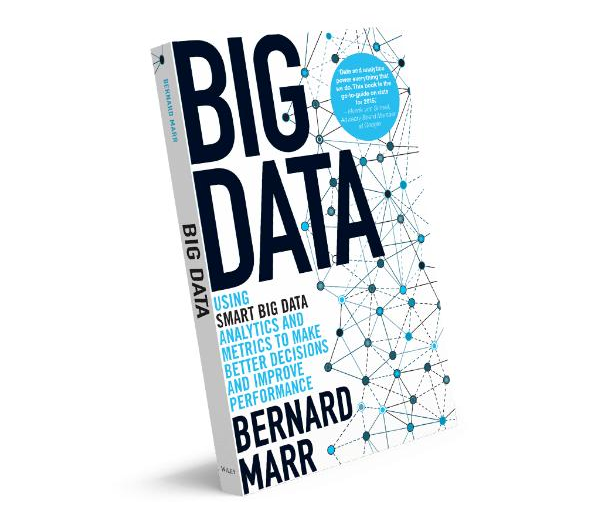

This the starting point for “Big Data Guru” Bernard Marr’s new book. It is a practical guide, full of tips for business leaders and owners, managers, or anyone in the workplace. To those who are steeped in the subject, the importance of data and analytics hardly needs spelling out, but the book is aimed at those who may still need persuading that Big Data is a real phenomenon and its successful application can make or break a business.
Today, the really successful companies understand where their customers are, what they are doing and where they are going. They know what is happening as it’s happening and they allow that information to guide their strategy.
He explains how Big Data is changing every facet of the world around us, from manufacturing and medicine to healthcare and human resources. Even romance is not immune from analytics – online dating site eHarmony matches people based on 29 different variables.
Marr is the chief executive of the Advanced Performance Institute and helps companies collect and analyze data to improve strategic decision-making. This means his book is full of practical, real-world examples based on his own experiences and best practice adopted by leading companies, such as Google, Amazon and Wal-Mart.
The book is entitled Big Data: Using Smart Big Data Analytics And Metrics To Make Better Decisions and Improve Performance.For Marr, the key word is “Smart”. Indeed, he prefers to talk about Smart Data rather than Big Data.
His message is that to succeed in this new world it is not enough to be data-rich – big does not equal better and entrepreneurs who put data at the center of their business can outsmart traditional players in any industry.
Too many business leaders drown in the data, overwhelmed by what they could be collecting, monitoring or measuring rather than realizing that they should be trying to build the smallest, simplest database in the world, not the biggest.
To do this, they need to start not with the data but with the strategy. What are their business objectives? What do they need to know and why? His SMART model will enable any business to identify their data needs: Start with Strategy; Measure Metrics and Data; Apply Analytics; Report Results; Transform Business.
He relates the example of a telecoms company with whom he worked. Their problem was customer churn so they needed better to understand customer loyalty. They had plenty of data, but had never looked at how people called each other; by mining that data and applying analytics they discovered a calling pattern that was most likely to lead to churn, allowing them to tailor offers and incentives to the most fickle customers.
There is a reproach for the data experts who fail to realize that analytics is only useful if the target audience understands the information it creates. Business leaders are already struggling to keep up with the sheer volume of data that comes across their desks so it’s pointless burying insights in weighty reports they will never read. Ideally, results should always be reported in a one-page infographic. Don’t assume Business Intelligence Software programs will solve the problem of presenting data in a way that is meaningful to the end user – in many case they won’t have the time or inclination to work out to how use it.
Although Marr is evangelical about the necessity of using data to transform business performance – whether it’s analyzing customer sentiment or tracking customer movements – he recognizes the danger of a Big Data backlash. The issues of privacy and transparency cannot be ignored. SMART businesses will realize this; if they are honest about what they intend to do with customer data, giving customers an opt-out and seeking permission to use it as long as it remains anonymous, they may not encounter as much resistance as they fear. But if they try to do it covertly, on the sly, it will prove counter-productive in the long run.
This book takes a very complex subject and makes it accessible and easily digestible. It’s essential reading for anyone wanting to understand how data and analytics can improve their business. But it’s also an invaluable guide for data experts who struggle to communicate their knowledge to colleagues in the boardroom.
‘Big Data – Using Smart Big Data, Analytics and Metrics To Make Better Decisions and Improve Performance‘ is published by Wiley. You can read a free sample chapter here.